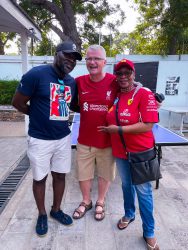In the past, having a strong brand name and reputation was enough to keep customers happy. Today, they crave personalization and convenience in every interaction they have with a company across different channels. Positive word-of-mouth is now of paramount importance, as it contributes to leads and facilitates conversions, whereas negative word-of-mouth can erode the customer base. There is therefore general pressure on every business to pay extra attention to all customer interactions and to transform the customer experience all round.
Customer experience (CX) refers to all the ways a customer interacts with a company and their perception of those interactions. It includes everything from advertising prior to becoming a customer, the actual sales experience, and finally, to post-purchase support. Creating a positive experience is essential for any business that wants to retain and grow its customer base. Businesses can create loyal customers only when they understand the different touchpoints of the customer journey and ensure that the customer enjoys a good experience at each level.
A recent Gartner survey reveals that some businesses cut the customer journey short. Crafting an incomplete customer journey weakens the opportunities that influence customer satisfaction, loyalty, and long-term advocacy. There are several customer service principles that often provide long-term benefits. However, the problem lies in the approach that some organizations use to achieve their CX transformation goals. While the obvious choice is often skewed towards technology investments that introduce new and innovative features or build on more robust customer engagement capabilities, the counter effect is the ballooning of the average number of CX tools being used.
StarLife is cited as Ghana’s third largest life insurance company in the Insurance Commission’s annual industry report. While this may be attributed to its considerable assets and market share, what really sets StarLife apart is the understanding, design, and orchestration of a seamless customer experience structure that leverages on product innovation, its people and ICT infrastructure.
It starts with market research
The company is noted for introducing a need-based life insurance approach, embedded with periodic reviews by a dedicated Product Development Team. The team is always armed with feedback gleaned from up-to-date research, customer surveys, and industry trends. Gathering customer insights for consistent product improvement purposes is an inspiring innovative technique at StarLife. After all, who better knows the experiences they crave from the brand than the customers themselves? Deliberately collecting valuable information about how customers truly feel about products and services puts the business in the right stead to learn more and to equip the business with the necessary tools that provide appropriate solutions, leading to an exceptional experience. It is also worth noting that staff are empowered to share ideas on improving products to suit customers’ evolving needs. One such is the “Anigye Plan”; an add-on feature to the WealthMaster Plus, which serves as an endowment plan to meet medium- to long-term goals whilst providing an attractive life cover.
People make things happen
Since the company values staff development, various structures have been put in place to enhance the technical and non-technical knowledge of its “StarLives”. The goal is to groom highly skilled and motivated staff guided by unrivalled ethical standards to push the vision. StarLife can boast of about 30 professionals in various disciplines, students at different levels of certification, and non-technical experts who together are enriching the customer experience. The emphasis on regular training for customer-facing teams is admirable. Product knowledge forms an integral part of staff onboarding since it embodies all customer interactions. Strategies to provide in-depth knowledge even before commencement of a work role eliminates the tendency to give inaccurate and faulty analysis that may further aggravate a customer’s situation. Similarly, top-tier staff have been trained to readily assess and outline alternatives that meet a customer’s needs. Such display of competence and confidence promotes effective communication and trust. Occasional spot quizzes with rewards for top performers serves as an incentive to demonstrate excellence at all times.
The role of technology in CX
StarLife is always at the forefront of responding to changing technology demands in the insurance industry. The company made a major push to automate its operations through its novel paperless insurance hall and the deployment of various digital platforms to boost customer self-service. Taking such bold steps amidst scepticism and reluctance by some industry players has yielded returns with spikes in customer trust and loyalty, especially during the worst stages of the COVID-19 pandemic and its associated restrictions that deferred physical interactions to digital applications – the new normal. StarLife’s effort to therefore “be where its customers are” is not limited to sales, but encompasses all the tools that are used to impact customer experience positively.
In creating memorable experiences, StarLife leverages:
- Products – All product features and benefits are clearly specified and readily available at all times. Officials are mandated to make available policy wordings at inception and explain clauses to promote transparency. This way, customers know what to expect, thereby eliminating confusion and disputes that may ruin the experience at a future date.
- People – Staff are trained regularly to refresh their knowledge. Soft skills like empathy drive the establishment of a shared purpose in supporting customers rather than a set of robotic behavioural rules with canned responses that yield nothing.
- ICT infrastructure: Investments have been made in the MyStar interactive mobile app, and other similar self-service platforms that readily provide customer policy account information and allow them to proactively solve basic problems on their own. Walkthrough videos and user-friendly infopacks are available to guide their use.
- Loyalty rewards – A classification module is used to identify customer patterns and analyse behavioural and social actions such as referral points, for corresponding rewards during stipulated appreciation times.
In a competitive industry like life insurance, one fool-proof way of holding on to your customers is to leverage customer experience. This can only be successful with a unique, time-conscious, and customized service approach that facilitates a cross-channel personalized experience to meet the diverse needs of each customer. By integrating all these touchpoints, StarLife is well on its way to transforming the customer experience.










